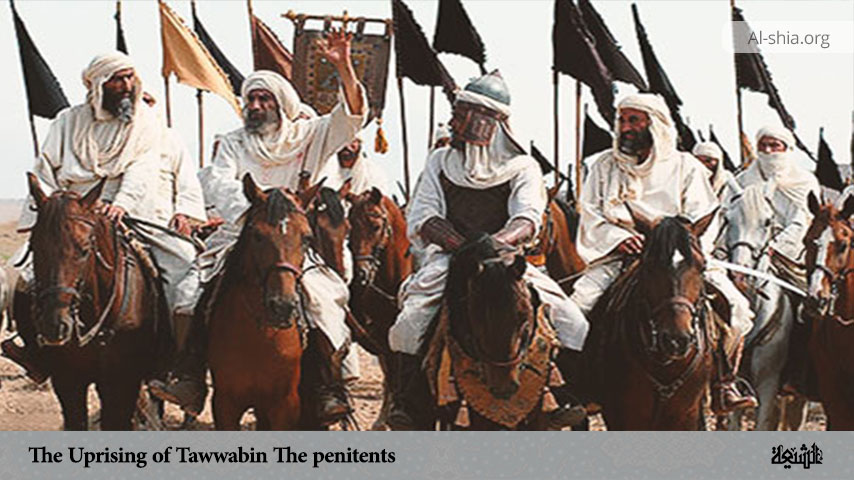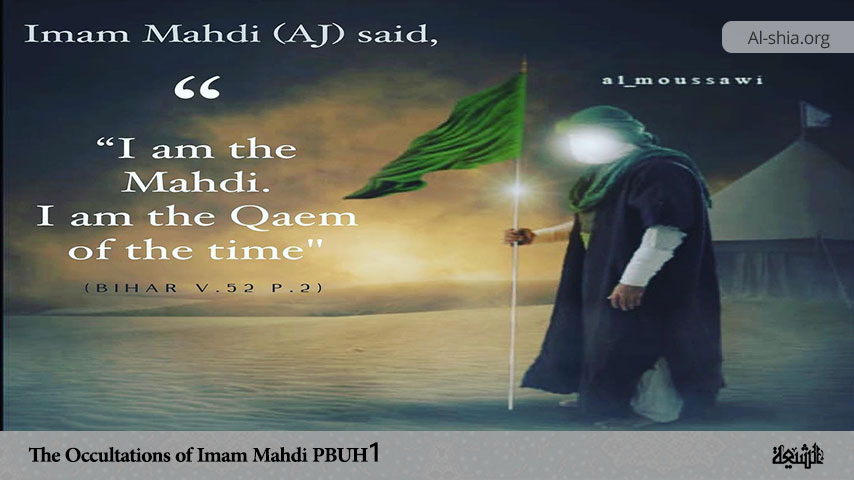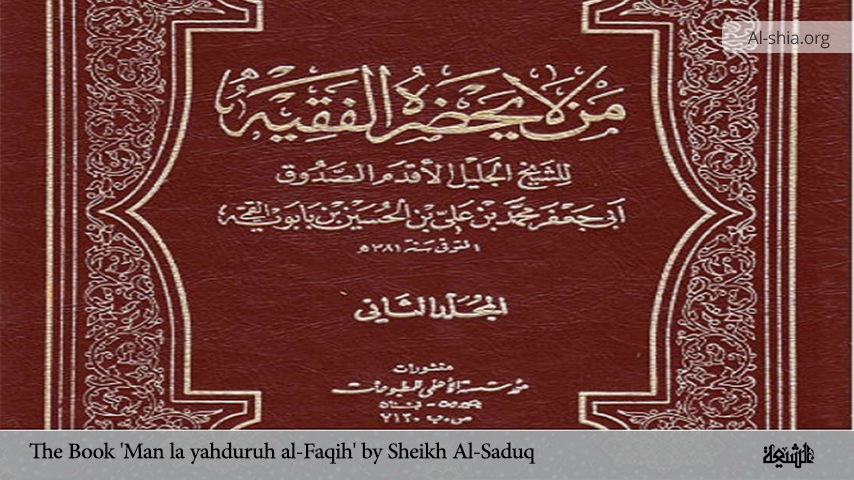The Uprising of the Tawwabin often referred to as the “Penitents,” represents a significant episode in early Islamic history. It was the first of Shi’a uprisings that emerged as a reaction to the events surrounding the Battle of Karbala in response to the increasing demand for vengeance for the martyrdom of Imam Husain. The Tawwabin viewed their uprising as a moral and religious obligation to rectify their previous inaction and to uphold the principles of justice and righteousness within the Islamic community. The significance of the Tawwabin movement lies not only in its immediate objectives of seeking retribution against the Umayyad regime but also in its lasting impact on Shia identity and Islamic political thought. The uprising symbolizes a moment of deep introspection within the Muslim community, emphasizing themes of accountability, virtue, and the struggle against tyranny. It has served to galvanize future generations, influencing subsequent revolts against oppressive rulers in Islamic history.
Historical Background
On the tenth of Muharram, 61 A.H (10 October, 680 CE), Imam Husain (peace be upon him) along with 72 other members of his household and companions was martyred by Yazid’s forces in Karbala[1]. A group of Kufans who failed to assist Imam Husain during this battle thereafter realized their great sin that they invited him but later withdrew their hands from assisting him until he was killed in their very neighbourhood. They felt regretful and realized that until and unless they either killed his murderers or were themselves killed, their sin and disgrace could not be washed off. Consequently, an organized movement was started by this group of Kufan Shia, who called themselves al-Tawwabin (the penitents).
The term ‘al-Tawwabin’ or ‘the penitents’ technically refers to a group of Kufan who resolved to take revenge for the murder of Imam Husain ibn Ali (peace be upon him), whom they had invited to Kufa in 680 CE[2]. Thus, the uprising of this group after the Battle of Karbala is referred to Tawwabin Uprising or the ‘Penitents Uprising’. In essence, the Tawwabin Uprising is the first of the Shi’a uprisings that took place after the Battle of Ashura in response to the demand for vengeance for the sacred blood of Imam Husain and his companions[3].
Formation and Ambition
The uprising started around some of the noblemen of Shias in Kufa such as Sulaiman ibn Surad al-Khuza’ī, the companions of the Prophet, Musayyab ibn Najabah al-Fazari, the companion of Imam Ali, and Rufa’ah ibn Shaddad al-Bajali, who was from among the best companions of Imam Ali. Initially, the group comprised one hundred Kufans, all aged sixty years or more. They held their first meeting in the house of Sulaiman ibn Surad Khuza’ī, a companion of Prophet Muhammad, in 61 AH (680/81 CE), in which Sulaiman was elected as the leader of the uprising[4].
Then Sulaiman arose and after praising Allah, said, “Now then! I fear that we shall not reach a better day than this age of short livelihood and the great sin that has enveloped the distinguished chiefs of Shi’a. All of us desired that the Progeny of the Prophet (PBUHH) should come to us and we promised to assist him. Then when they came to us, we displayed lethargy and indigence and became negligent. We waited for one another until the son of our Prophet (PBUHH), his progeny, his offspring, and the pieces of his body were martyred. He desired justice but was denied, the lewd men made him the target of arrows and focus of spears, and they galloped towards him and put aside justice. Beware! Now arise, for your Lord is furious with you, and shut your eyes from your wives and children so that Allah may be pleased with you. By Allah! I do not presume that He will ever be pleased with you until you fight those who killed him. Do not fear death, for everyone who fears death is humiliated. Then be like the followers of Bani Israel when their Prophets told them: You oppressed your own self when you worshipped the calf, then return back to your Creator and kill your own ego. They refused and knelt down, then rebelled. But then they realized that there was no other way for deliverance from this great sin, except being killed. Then if you are invited towards that which they were invited, then what shall you do? Then sharpen your swords and fix points upon your spears. ‘And prepare ye against them whatever (force) you can, and steeds of war at the garrison.’ [Qur’an 8:60].[5]”
The movement remained secret until 64 AH (683/84 CE)[6]. After the death of Yazid and the Iraqis drove out the Umayyad governor Ubaydullah ibn Ziyad and Iraq came under the influence of Abdullah ibn Zubayr. The collapse of Umayyad authority eased conditions for the Tawwabin and they publicly started calling for support to their cause.
The Uprising
Tawwabin (Penitents) thereafter started their activities by gathering requirements for the battle and inviting people to seek revenge over the killing of Imam Husain (peace be upon him). The movement had no further goals apart from fighting the Umayyads and atoning for their failure to support Imam Husain (peace be upon him) at the Battle of Karbala. Their slogan was “Ya la-tharat al-Husain” (O Avengers of al-Husayn!)[7] and according to a report, about 16,000 people enlisted in the register of Sulaiman. However, Sulayman ibn Surad was disappointed when a large group of Shi’as, especially the people of Basra and al-Mada’in, dishonoured their promise to take part in the rise[8].
In Rabi’ al-Thani of 65 AH (November/December 684 CE), Sulaiman summoned his men who had joined his army to Nukhayla. However, out of a total of 16,000 men who had promised to show up, only 4000 were present. One of the reasons was that Mukhtar al-Thaqafi believed that Sulaiman had no experience of wars, so many Shias, especially those from the cities of Mada’in and Basra, began to abandon him in large numbers[9].
The army spent three days in Nukhayla and then went to Karbala to mourn at the grave of Imam Husain (peace be upon him). Sulayman ibn Surad said, “Oh Lord, witness that we are followers of Husain’s religion and path. We are the enemies of his murderers[10].” They thereafter prayed that since they had missed the chance to be martyred along with Imam Husain (peace be upon him) at Karbala, God would not deny them another chance to be martyred after Husain.
Before the army of Syria arrived, the Tawwabin stopped at ‘Ayn al-Warda and took five days to rest. On the day of the conflict, Sulaiman ibn Surad organized the fights, announced his advice, and introduced his successors. He said: “If I am killed, the leader of the army would be Musayyib ibn Najaba. After him, Abd ‘Allah ibn Sa’d ibn Nufayl shall take the leadership of the army. After his death, Abd ‘Allah ibn Wal and Rifa’a ibn Shaddad are going to be the leaders of the Tawwabun’s Battle[11].”
After visiting Karbala, the army arrived at Qarqisia. The Tawwabin pressed on to Ayn al-Warda (identified with Ra’s al-Ayn), where they met an Umayyad army of 20,000, under the command of Husain ibn Numayr. The battle started on 4 January 685 and lasted for three days. They fought the Umayyad army bravely and this brave revolt and resistance against the Umayyad dynasty paved the ground for another Shiite uprising and revolt against both Umayyad and Zobairians by Mukhtar al-Saqafi who succeeded in killing all the murderers of Imam Husain (peace be upon) establishing a Shiite state which was a great historical incident in the history.
Although the Tawwabin held the upper hand in the first skirmish, over the next two days the numerical superiority of the Umayyad army began to prevail. Finally, Sulayman was killed and their leaders were killed one by one, and the few remaining soldiers were surrounded. They had no choice but to retreat under the leadership of Rifa’a ibn Shaddad al-Bajali.
Rifa’a ibn Shaddad therefore advised the survivors to return and brought them to Qarqisiya. On their way back, the Tawwabin were met by the Shi’as of Basra and Mada’in who had come to help them. They exclaimed their grievances and went back to their cities. When the defeated Tawwabin army reached Kufa, Mukhtar al-Thaqafi, who was incarcerated, praised Sulaiman ibn Surad and the martyrs of their war and vowed to take vengeance on their killers, and rise to avenge the martyrdom of Imam Husain (peace be upon him). The small number of Tawwabin who survived the battle, went over to Mukhtar al-Thaqafi and became the backbone of Mukhtar’s movement, called themselves Shia al-Mahdi, Shia al-Haqq, or Shia al-Muhammad.
Consequences of the Uprising
The battle resulted in a decisive defeat for the Tawwabin, with heavy casualties and the loss of many key leaders, including Sulayman ibn Surad al-Khuzai. This defeat underscored the challenges faced by the movement in confronting a well-established and fortified Umayyad army. Many participants were captured or killed, while the remnants of the Tawwabin scattered, leading to a temporary suppression of dissent against the Umayyad regime.
However, despite its failure, the uprising solidified the narrative of martyrdom and sacrifice within Shia Islam, serving to inspire subsequent generations to honor the legacy of Imam Hussein and uphold the principles of social justice. The Tawwabin movement played a crucial role in fostering a sense of collective identity among Shia Muslims, establishing a framework for future resistance against oppression in the name of justice and divine righteousness.
Conclusion
The Uprising of the Tawwabin represents a significant historical episode that underscores the complexities of justice, accountability, and resistance within early Islamic society. This uprising occurred after the martyrdom of Imam Hussein, where a group of individuals sought to avenge his death and express their remorse for not being able to support him during the battle.
While their attempts ultimately ended in defeat at the Battle of Ayn al-Warda, the movement laid the groundwork for the development of Shia identity and collective memory, reinforcing themes of sacrifice and righteous struggle against tyranny. The legacy of the Tawwabin continues to resonate within contemporary Islamic discourse, inspiring future generations to uphold the values of dignity and justice that were so courageously championed by Imam Hussein and his supporters. Thus, the Tawwabin’s quest for rectitude remains a vital part of the ongoing narrative of resistance against oppression in Islam.
References
[1] . Ṭabarī, Tārīkh al-umam wa l-mulūk, vol. 5, p. 455
[2] . Ibn Aʿtham, Kitāb al-futūḥ, vol. 6, p. 205, 206; Ibn Saʿd, al-Ṭabaqāt al-kubrā, vol. 6, p. 25.
[3] . Vaglieri, Luca. “The Tawwabin or ‘Penitents’.” In The Encyclopaedia of Islam, vol. 3, pp. 554–556.
[4] . Ṭabarī, Tārīkh al-umam wa l-mulūk, vol. 4, p. 430-431.
[5] . Majlisī, Biḥār al-anwār, vol. 45, p. 355.
[6] . Daftary, Farhad, The Ismāʿı̄lı̄s: Their History and Doctrines, p. 51.
[7] . Sharon, Moshe, Black Banners from the East: The Establishment of the ʻAbbāsid State, p. 103.
[8] . Ibn Kathīr, al-Bidāya wa al-nihāya, vol. 8, pp. 276-277
[9] . Balādhurī, Ansāb al-ashrāf, vol. 6, p. 367-368.
[10] . Abū Mikhnaf, Maqtal al-Ḥusayn, p. 291
[11] . Ibn Kathīr, al-Bidāya wa l-nihāya, vol. 8, p. 278.

















